Affiliate links on Android Authority may earn us a commission. Learn more.
Apple vs Samsung: The ultimate head-to-head
Published onFebruary 10, 2025
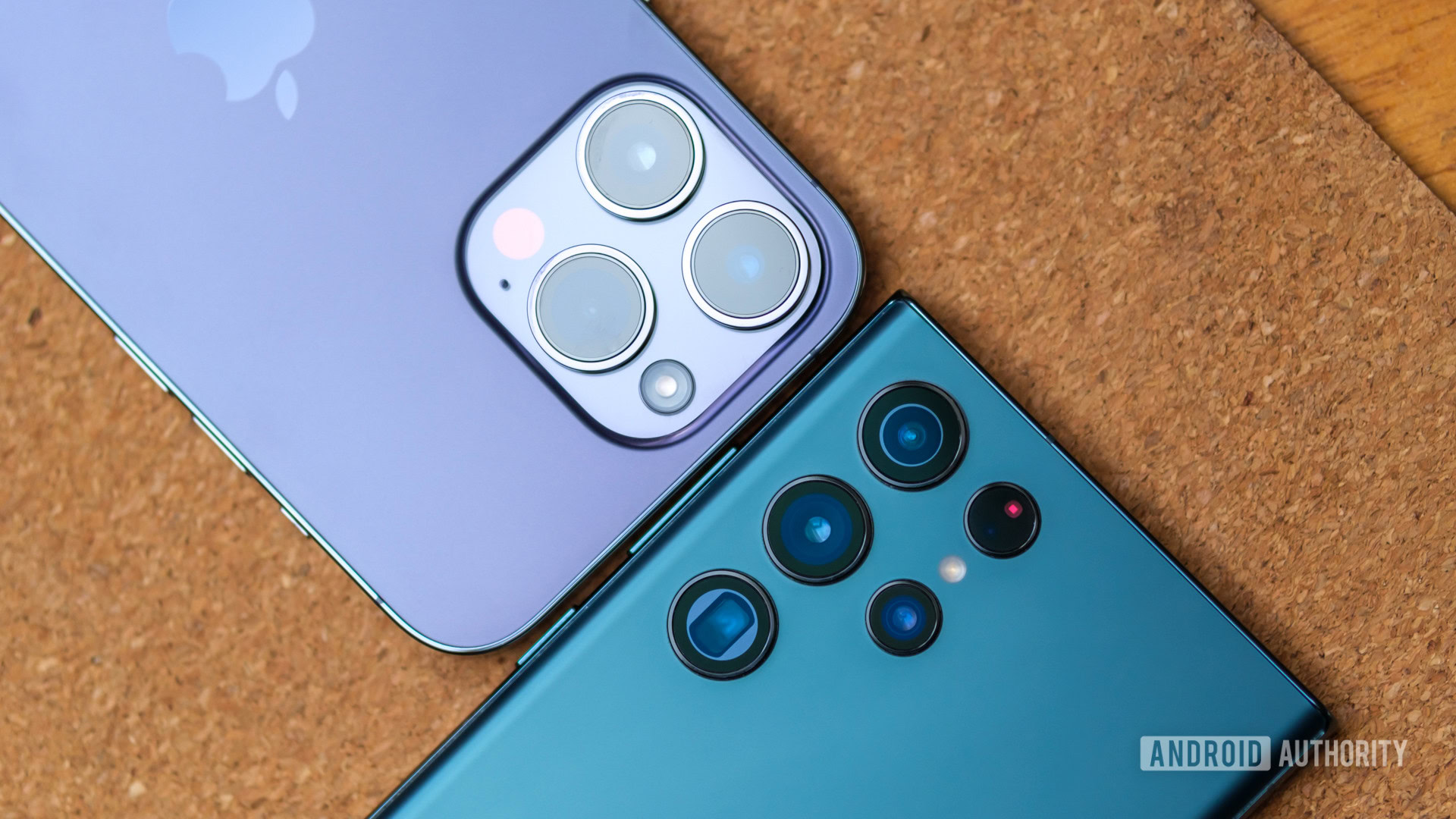
Apple’s iPhone and Samsung’s Galaxy lineup are juggernauts in the smartphone industry. Apple is supreme in the US, having claimed 52% of the local smartphone market in the first quarter of 2023, compared to Samsung, which took second place with 27%. But quantity doesn’t always mean quality, naturally, and this guide will compare the two companies along every measure, from performance and design to ecosystem and security. Ready for the ultimate showdown? Here’s how Apple’s iPhones stack up against Samsung’s Galaxy series.
iPhone vs Samsung: Product lineup
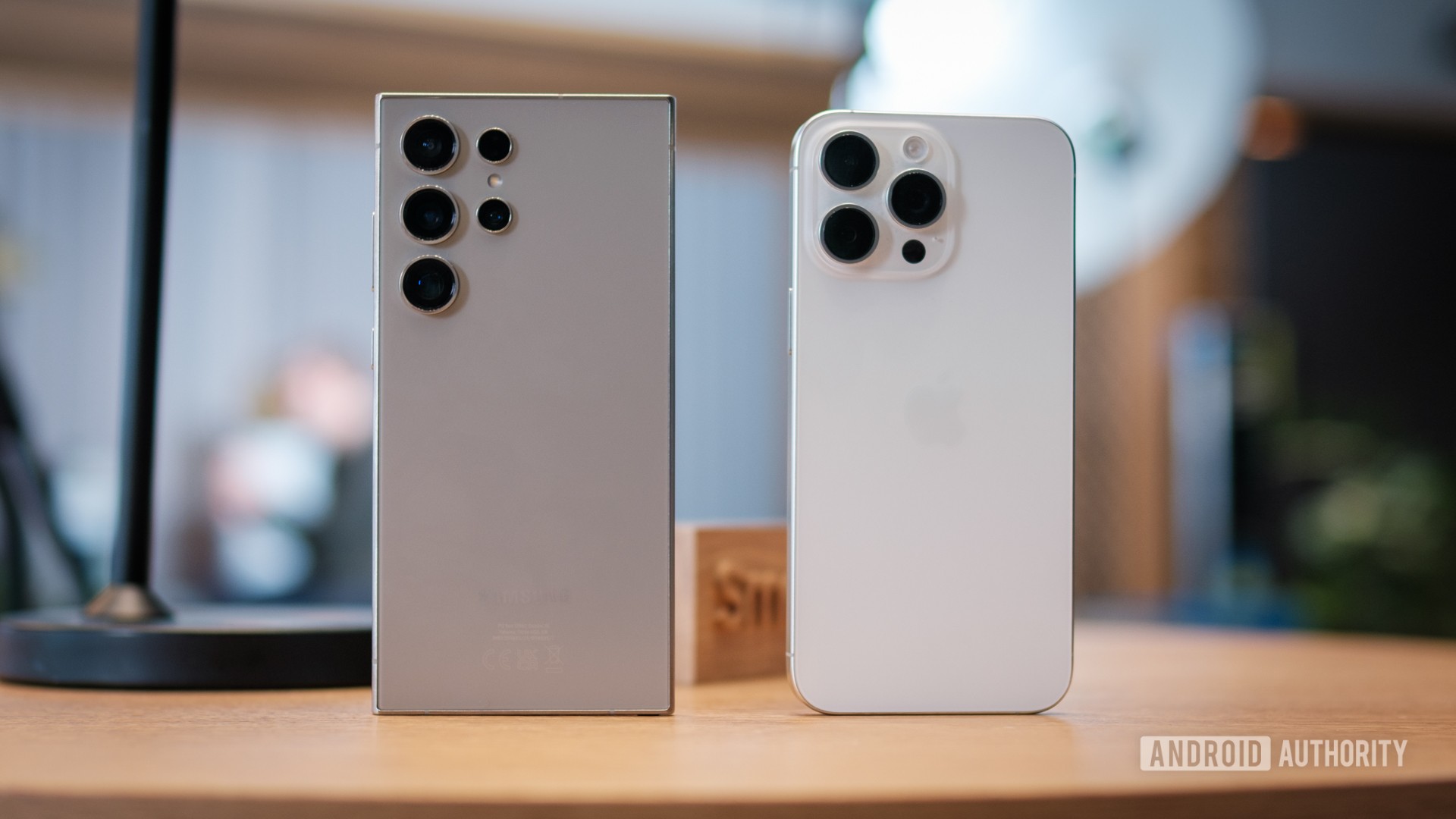
Apple and Samsung compete in many of the same areas of consumer electronics (phones, laptops, wearables, and so on), but their core customer bases can be quite different. This has to do with differences in design, price, compatibility, functionality, and perhaps a bit of loyalty bias, which we’re here to dispel.
Samsung has a lot more phones on offer than Apple.
Samsung offers multiple phone lineups. The Galaxy A and M series are affordable options with respectable specs for those who just want the basics. Galaxy S models represent Samsung’s flagships, with some of the fastest chips and snappiest cameras on the market. The newer Galaxy Z series are foldables, which are still quite expensive.
Apple’s iPhone lineup is comparatively small. Four variants of the iPhone 16 currently lead it, and only two of them — the 16 Pro and 16 Pro Max — sport the company’s best technology, with high price tags to match. “Budget” options are limited to the company’s older models, including the iPhone 15, iPhone 14, iPhone 13, and iPhone SE. The SE should get a refresh later this year.
We’ve broken down Apple and Samsung’s lineups into three categories: entry-level, mid-range, and high-end. Of course, great phone deals can always upend things, but we’ll be going by standard retail prices to keep things fair.
Entry level
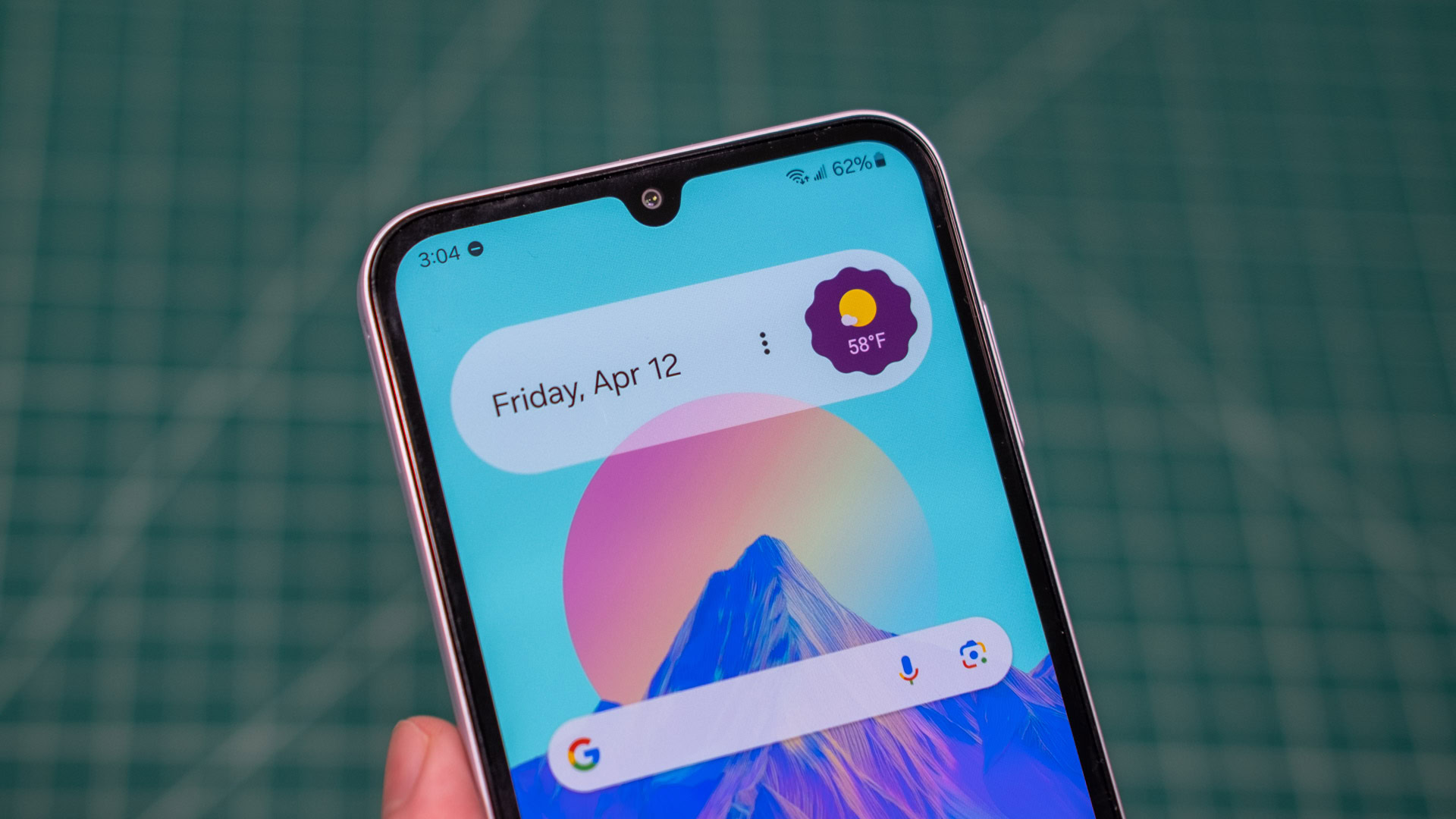
Samsung has one of the best reputations for budget phones. The Galaxy A series offers an affordable range that won’t make you feel like you’ve made (serious) compromises on quality.
The latest model in the lineup, the Galaxy A16 ($199.99 at Samsung), costs $199 and offers six years of software support — a massive promise considering the phone’s modest asking price.
Older models, including the Galaxy A15 ($174.8 at Amazon) and the Galaxy A14 5G ($199 at Amazon) remain excellent budget options. They both pack sharp FHD Plus displays, two-day battery endurance, and reasonable performance. Notably, while the A16 no longer packs a 3.5mm headphone jack, the A15 and A14 are among the few new phones to feature one.
Samsung has one of the best reputations for budget phones.
The cheapest Samsung phone we recommend is the Galaxy A03s ($124.99 at Samsung). Sure, it’s a pretty basic device, but for well under $200, you get a beefy battery, a reliable fingerprint reader, and two OS updates with four years of security updates.
In India, the UK, and several other European countries, Samsung sells its Galaxy M series of budget phones, offering high-capacity batteries and multi-lens camera setups. It is positioned below the more streamlined Galaxy A series, although the newer, higher-end models (relatively speaking) were derived from the A series with several alterations. For instance, many phones in this lineup house MediaTek processors.
As for Apple, you won’t find an iPhone for less than $429 unless it’s a much older model (which likely entails outdated hardware and software) or bought second-hand. That’s just how it is with Apple.
Mid-range
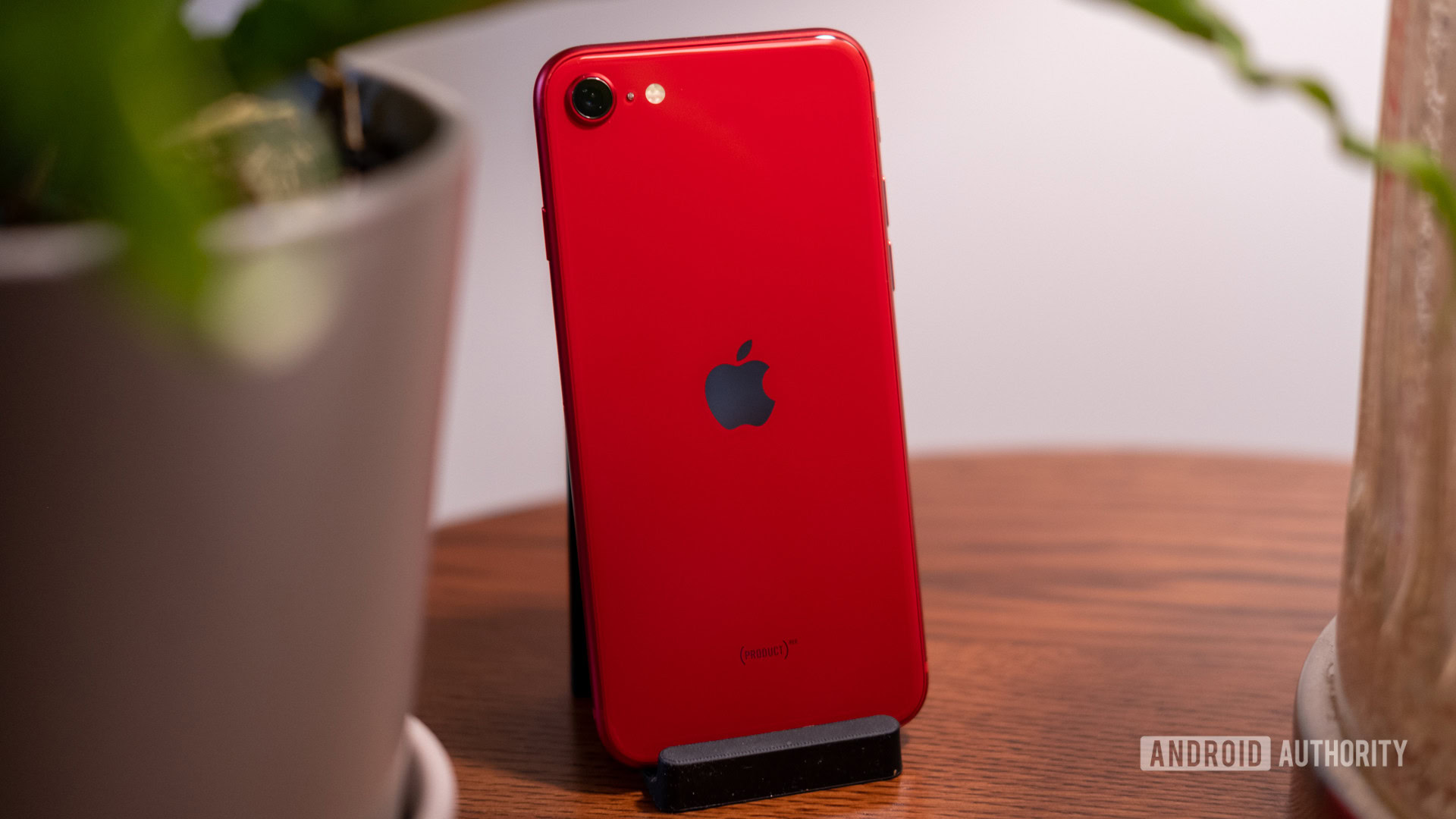
Samsung’s Galaxy A55 5G ($387 at Amazon) is among the best value smartphones you can buy. It also comes with a few future-proof comms, such as Wi-Fi 6E and Bluetooth 5.3 support for under $500. Perhaps more importantly, you get solid battery life and a long update commitment.
Samsung’s other notable mid-ranger is the Galaxy S24 FE ($552.54 at Amazon). It’s essentially a scaled-back version of the regular S24 but employs a powerful Exynos 2400e processor, a 120Hz display, wireless charging, and a 50MP main camera with optical stabilization, among other features.
The cheapest “new” iPhone on offer is 2022’s iPhone SE ($429 at Amazon). Despite its old exterior design that hasn’t changed since the iPhone 8, the inside of the SE houses Apple’s powerful A15 Bionic chip, the same found in the iPhone 13 series and the iPhone 14/14 Plus. The main things that hold it back are its small 4.7-inch LCD screen, singular 12MP wide-angle camera, and a lack of MagSafe, though you can still charge wirelessly if you don’t want to use Lightning.
Apple’s only other mid-range offerings are the iPhone 14/14 Plus and the iPhone 13. Some might debate whether the iPhone 14 qualifies since it starts at $699, but it now falls below the iPhone 16 and 15 in the pecking order.
High-end
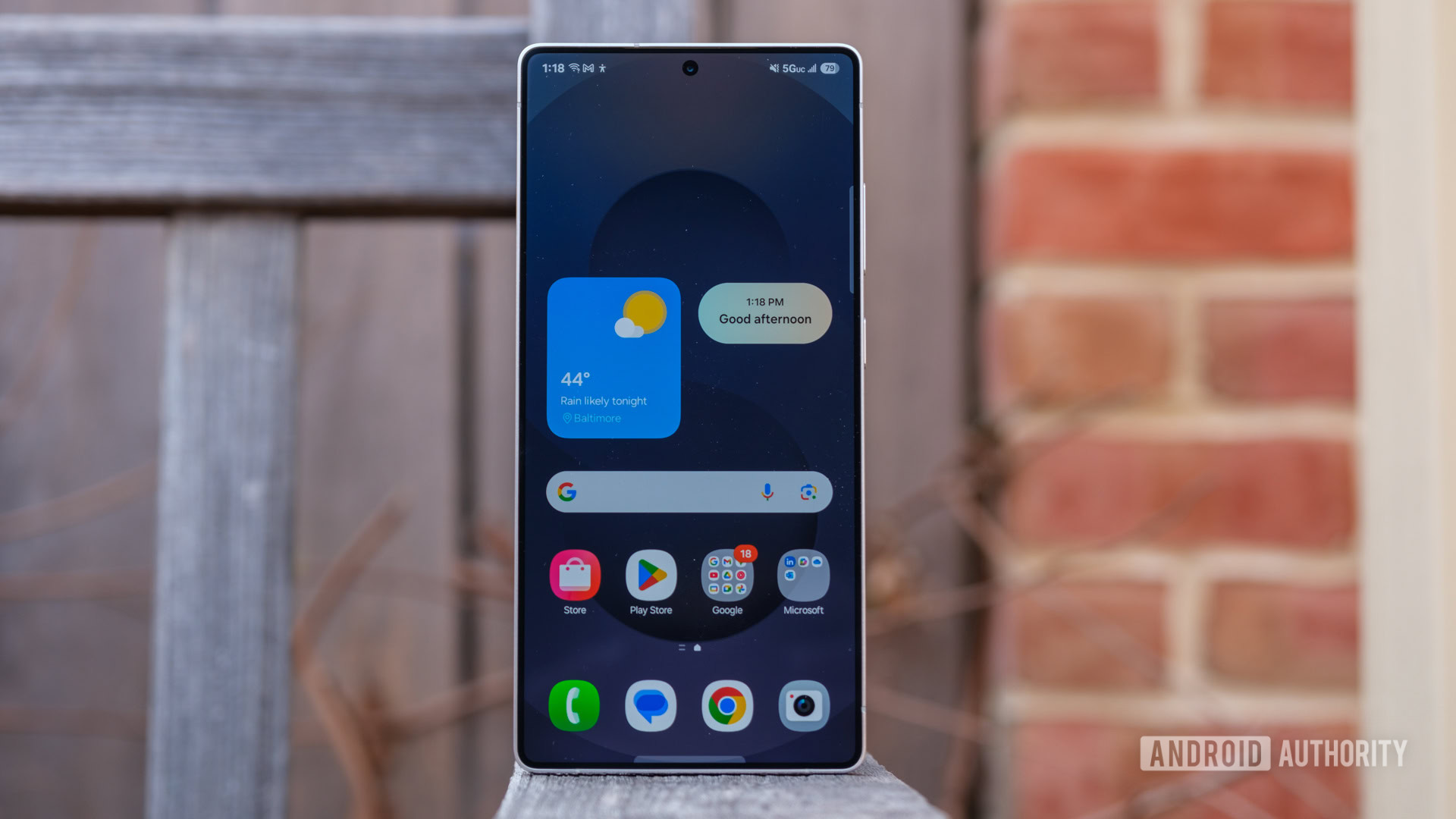
Phones in this category are often close to or above $1,000, and that’s right on the nose for the best high-end Samsung phone for most people. The best option in this regard is the Galaxy S25 series (from $809.99 at Amazon). Between a upgraded processors that now power AI smarts, a full day’s battery, a reliable triple-camera setup, and a seven-year software support promise, no one should have any complaints.
If you want Samsung’s absolute peak, the Galaxy S25 Ultra ($1299.99 at Amazon) is a power user’s dream. It has a dazzling 6.8-inch AMOLED display, and its cameras may be the best in the industry. Of course, it’s also one of the most expensive phones, but you also get an integrated S Pen.
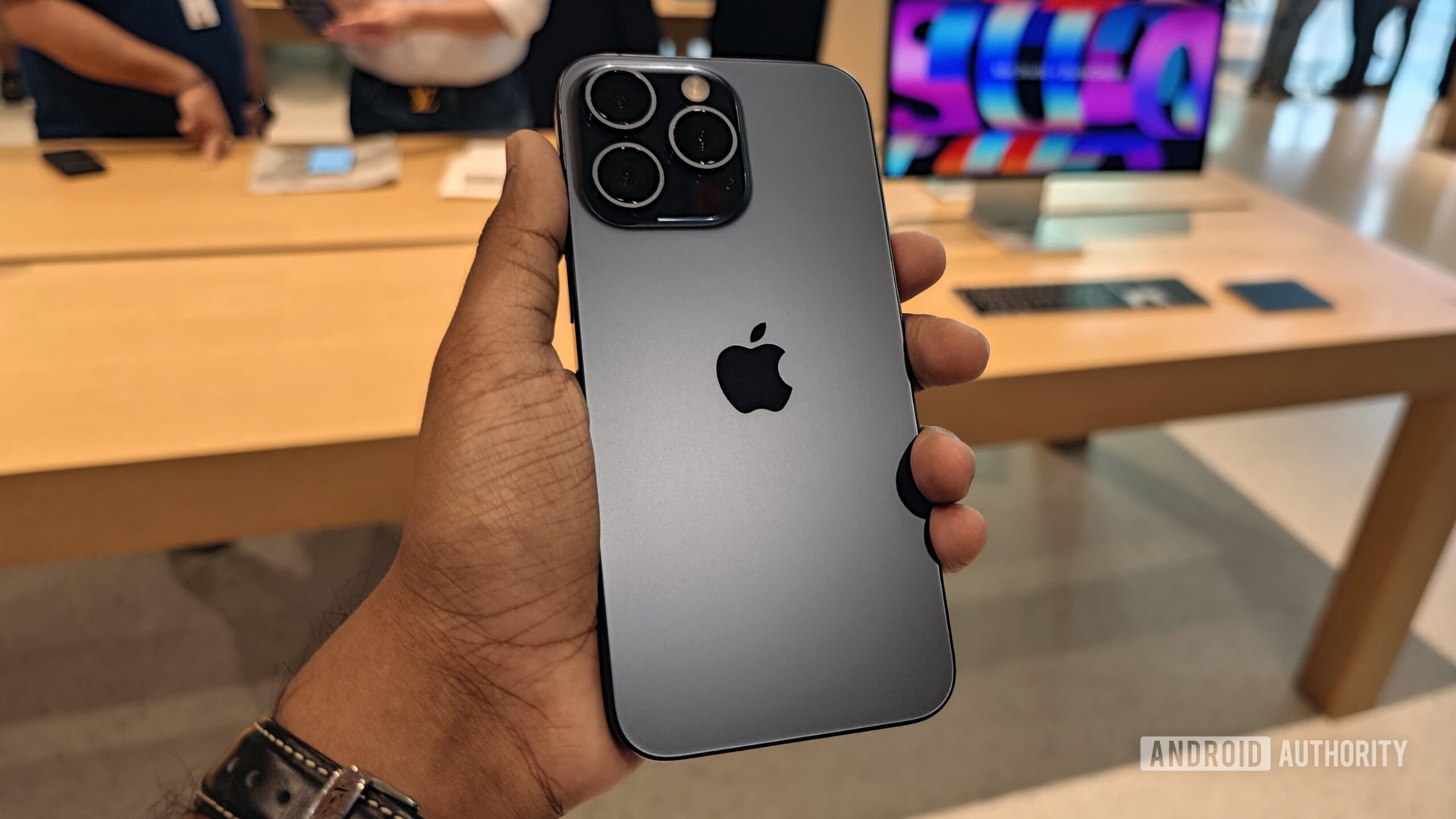
The iPhone 16 Pro ($999 at Amazon) and Pro Max ($1199 at Amazon) are Apple’s current top offerings. The 6.3-inch iPhone 16 Pro has a titanium frame, camera upgrades, a multi-purpose Action button and a new camera control button, Apple’s ultra-fast A18 Pro processor, and a USB 3.1 port. The Pro Max is mostly the same, but upgrades to a 6.9-inch display.
Samsung is the only one of the two companies with foldables, at least at the moment.
The vanilla iPhone 16 ($799 at Amazon) is more affordable than its siblings. It’s equipped with the A18 processor, and lacks any kind of telephoto lens, which puts it at a disadvantage next to comparable Android phones, including the majority of Samsung’s fleet. It’s likewise stuck with an outdated 60Hz refresh rate, and while it does have a USB-C port, that’s limited to slow USB 2.0 speeds. It’s actually a good phone overall — but Apple really, really wants you to spend more on a Pro. If all you care about is screen size and battery life, you can spend $100 more and get the 6.7-inch iPhone 16 Plus ($929.99 at Amazon).
Samsung is the only one of the two companies with foldables, at least at the moment. The Galaxy Z Flip 6 ($1099.99 at Samsung) evolves a classic clamshell design for the modern age, and packs plenty of power, solid rear cameras, and more for $1,000. If you want a tablet replacement, the Galaxy Z Fold 6 ($1899.99 at Samsung) is ready to oblige, though you’ll have to buy your own S Pen on top of the phone’s colossal $1,800 base price. At that level, you’re spending as much as you might on a desktop gaming PC.
Everything else
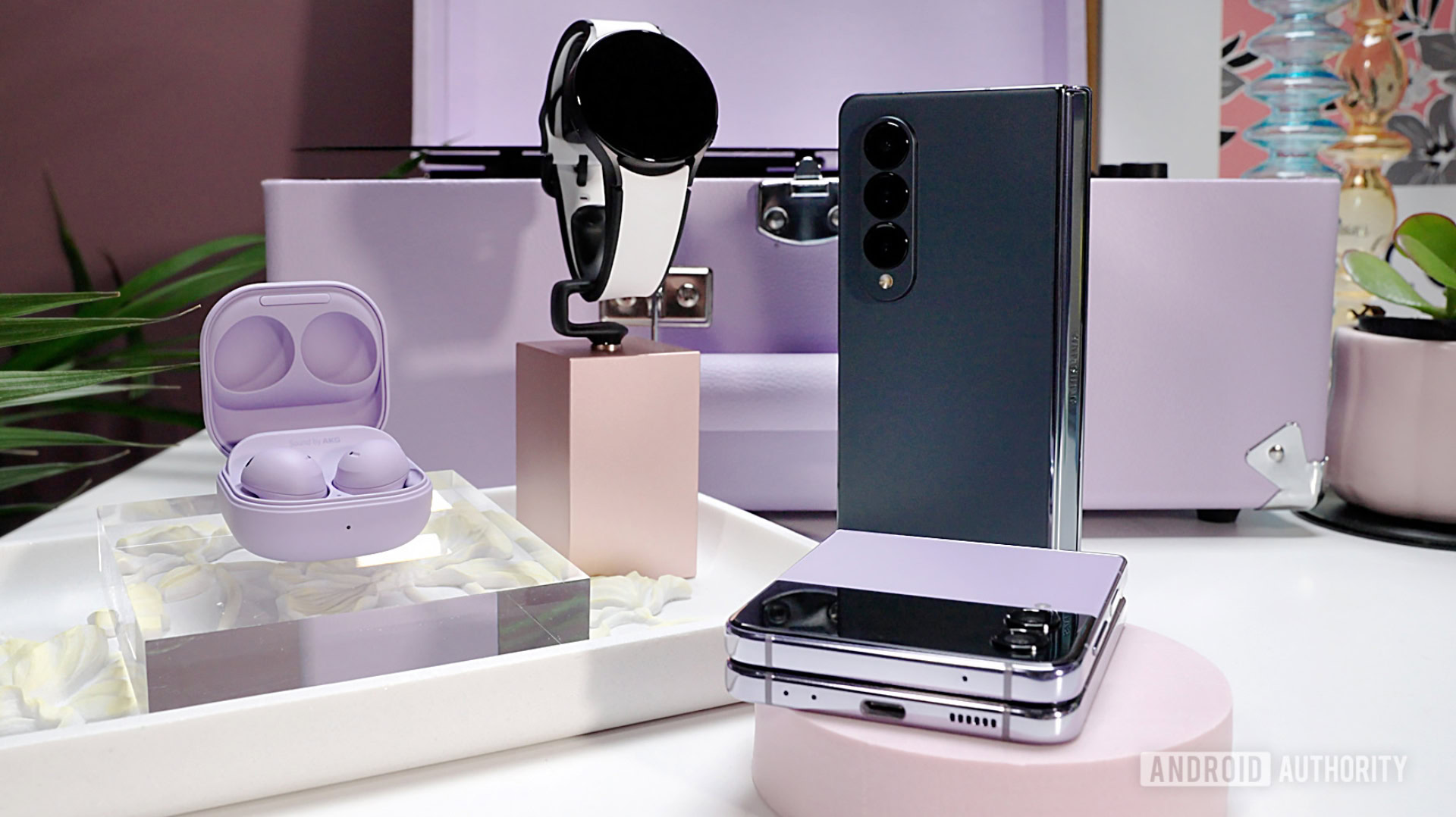
Both companies have an enormous stable of consumer electronics that aren’t phones, including laptops, earbuds, wearables, tablets, smart home devices. In these categories, Apple is usually dominant. MacBooks tend to be much more popular than Samsung’s Galaxy Books, for instance, and iPads are more popular than Galaxy Tabs. AirPods and Apple Watches easily outsell Galaxy Buds or Galaxy Watches.
Much of this can be attributed to Apple’s ecosystem being tightly integrated, so the more Apple products you have, the better your experience becomes. Some products (like the Apple Watch) outright require another Apple device to work. Samsung has tried to imitate this, but its ecosystem is a little looser, which does at least mean you’re not stuck if you want to mix and match brands — you’re welcome to pair your Galaxy Watch with a Google Pixel.
Samsung does have a footprint in areas Apple might never touch, like TVs, fridges, and washing machines. You can even unite them with your other devices through SmartThings, which is Samsung’s answer to HomeKit and Find My.
iPhone vs Samsung: Hardware and tech
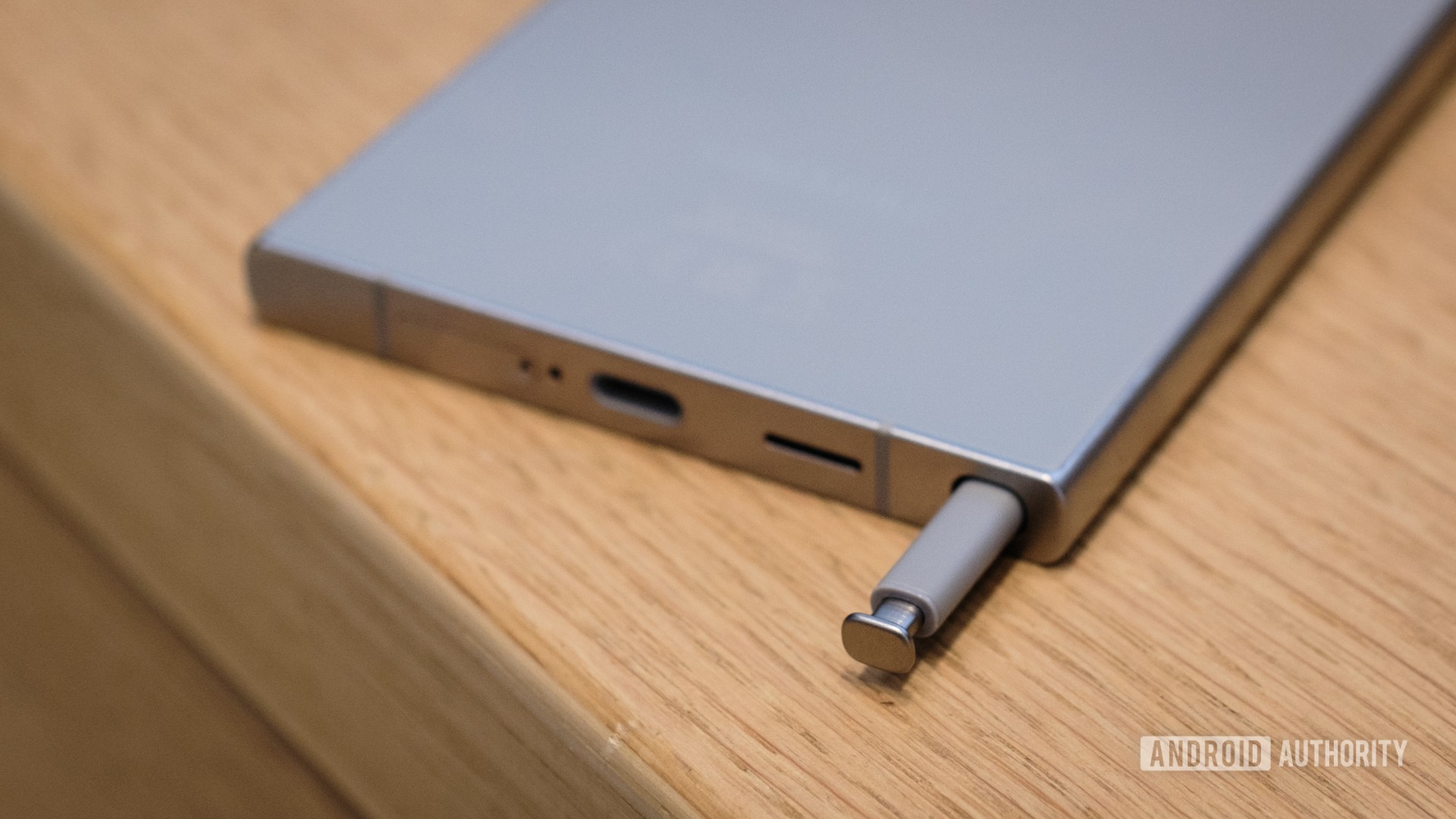
Depending on what you look for in a phone, this section can be the real meat and potatoes in deciding what’s best for you. Here are some quick comparisons of Apple and Samsung phones’ important tech.
Chips
Previously, Samsung has tended to use Qualcomm’s Snapdragon chipsets for certain parts of the world, including the US, and its first-party Exynos chips in others. This practice took a break with the Galaxy S23 phones, where you’ll only find the Snapdragon 8 Gen 2 chipset, but this Qualcomm/Exynos divide briefly returned for the Galaxy S24 series, with the Snapdragon 8 Gen 3 for Galaxy and Exynos 2400 residing in different regional models. For the Galaxy S25 series, the all models feature the Snapdragon 8 Elite for Galaxy.
Apple doesn’t engage in this practice. It usually offers two chipsets worldwide determined by the model itself. The base iPhone models usually get the previous year’s chipset, while the Pro models employ the bleeding-edge silicon. This is the case with the iPhone 16 and iPhone 16 Pro.
The iPhone 16 Pro’s A18 Pro chip is a fast chip, beating the Galaxy S24 Ultra’s Snapdragon 8 Gen 3’s GeekBench 6 scores in our tests. Its sustained scores are also pretty good, nearly toppling its Qualcomm equivalent.
Will you feel this difference in real-world performance? Probably not. There’s very little to distinguish between the silicon used by Apple and Samsung and to be frank, the chips used by both companies are excellent. You’re more likely to notice the difference in hardware in other facets.
Cameras
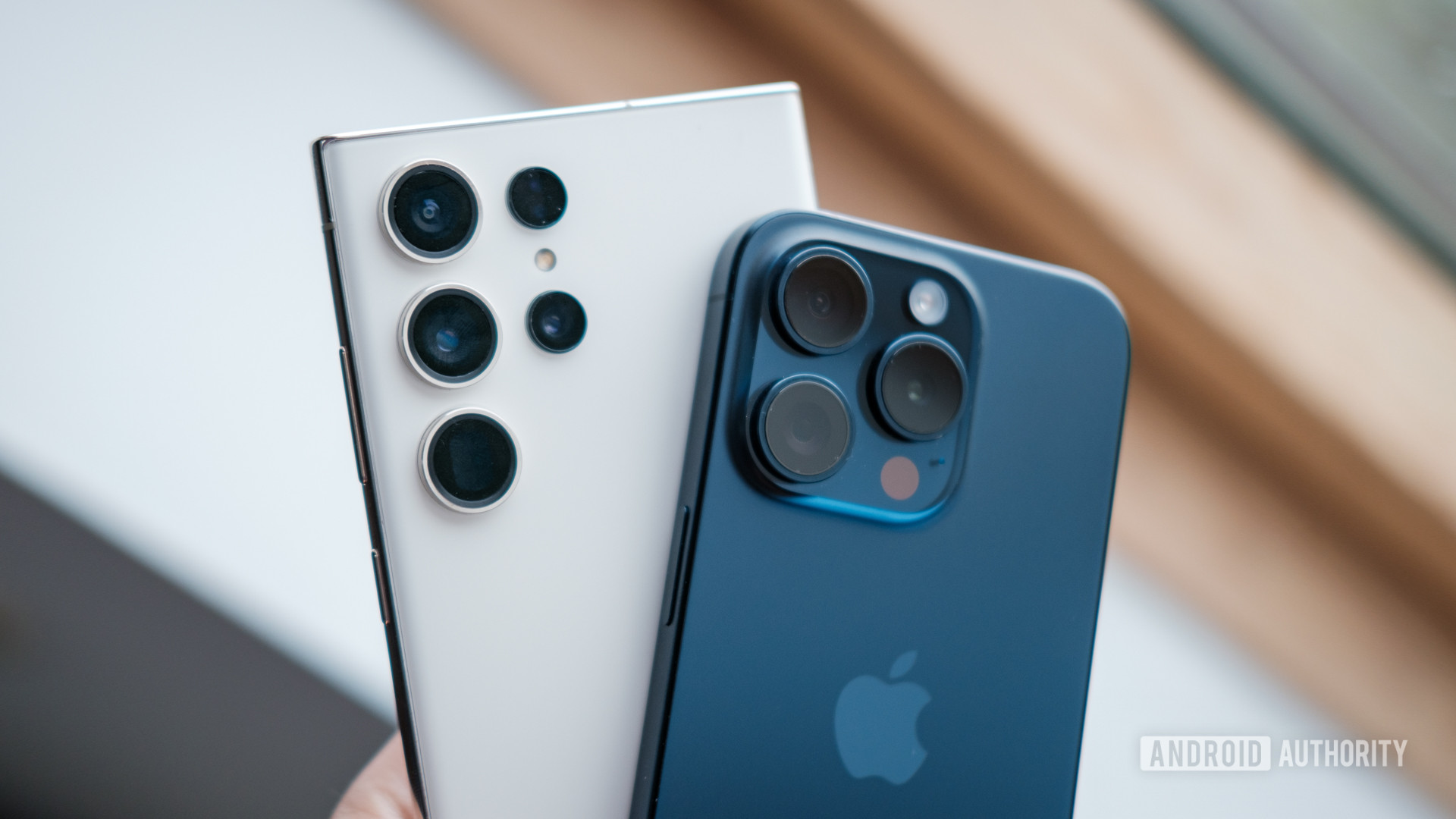
Camera tech is increasingly more important than processors to the average person since only pros and hobbyists use standalone cameras. Most Samsung phones have very versatile camera setups, with budget options having at least three rear cameras, including a primary (wide), macro, and ultrawide. Telephotos are entering Samsung’s budget space. With iPhones, you’re stuck with a wide and an ultrawide unless you’re willing to spring big for a Pro model.
In terms of sheer power, there is one clear winner in the camera department: Samsung’s Galaxy S24 Ultra. Its megapixel might on both the front and back, combined with in-depth control, was enough for us to declare it the best phone camera available that we’ve tested so far. It has a quad-camera system including a stellar 200MP shooter, joined by a 10MP periscope camera, a 10MP telephoto lens, and a 12MP ultrawide lens. We haven’t yet reviewed the Galaxy S25 Ultra, but it’ll likely take its predecessor’s title thanks to its upgraded ultrawide camera hardware.
Apple’s latest high-end model, the iPhone 16 Pro Max, is an admirable runner-up. You’re getting a 48MP main camera, a 48MP ultrawide, and a 5x telephoto, combined with Apple’s usual sensor and processing wizardry that lets the company punch above paper specs. Indeed most true professionals would probably rather shoot video on a Pro Max to take advantage of things like ProRes files, log recording, and support for the Academy Color Encoding System, even if they might need custom lenses.
Display
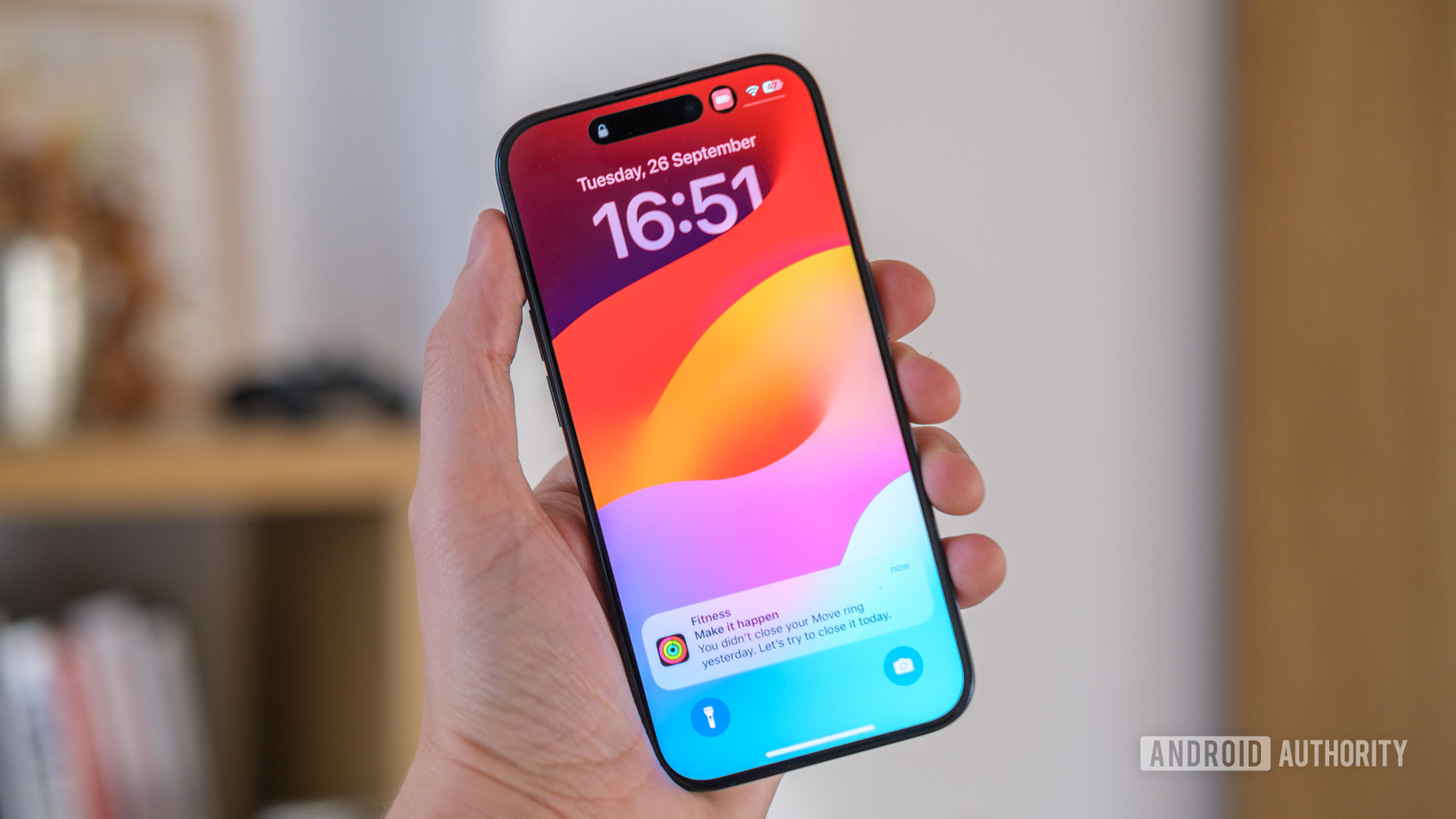
As for the screen you’ll be looking at, Apple and Samsung’s flagships have sharp HDR displays with similar peak brightness values, though Apple wins by the nits on the iPhone 16 lineup. If you’re looking at budget models, Samsung tends to win. Even cheaper Galaxy A-series phones have decently-sized AMOLED panels, whereas Apple’s iPhone SE is frozen in time with a 4.7-inch LCD that can never go completely black.
Samsung relies on Gorilla Glass protection for most of its phones, the strength of which usually goes up with the device’s price tag, the strongest material being Victus. Apple has used Ceramic Shield for its phones since the iPhone 12 series, a new type of glass developed by Corning, the same firm behind Gorilla Glass. Every non-SE iPhone gets the same Ceramic Shield protection regardless of cost, which is generally good even if you should still buy a case to prevent cracks.
The biggest difference between the two companies regarding screen specs is Samsung’s commitment to faster refresh rates. As mentioned, the iPhone 16 and 16 Plus still have 60Hz panels, whereas less expensive Galaxy phones are hitting 120Hz. If you want ultra-smooth motion on an iPhone, you have to pay for a Pro. Ditto if you want always-on display tech, which is extremely common in the Android world.
Battery
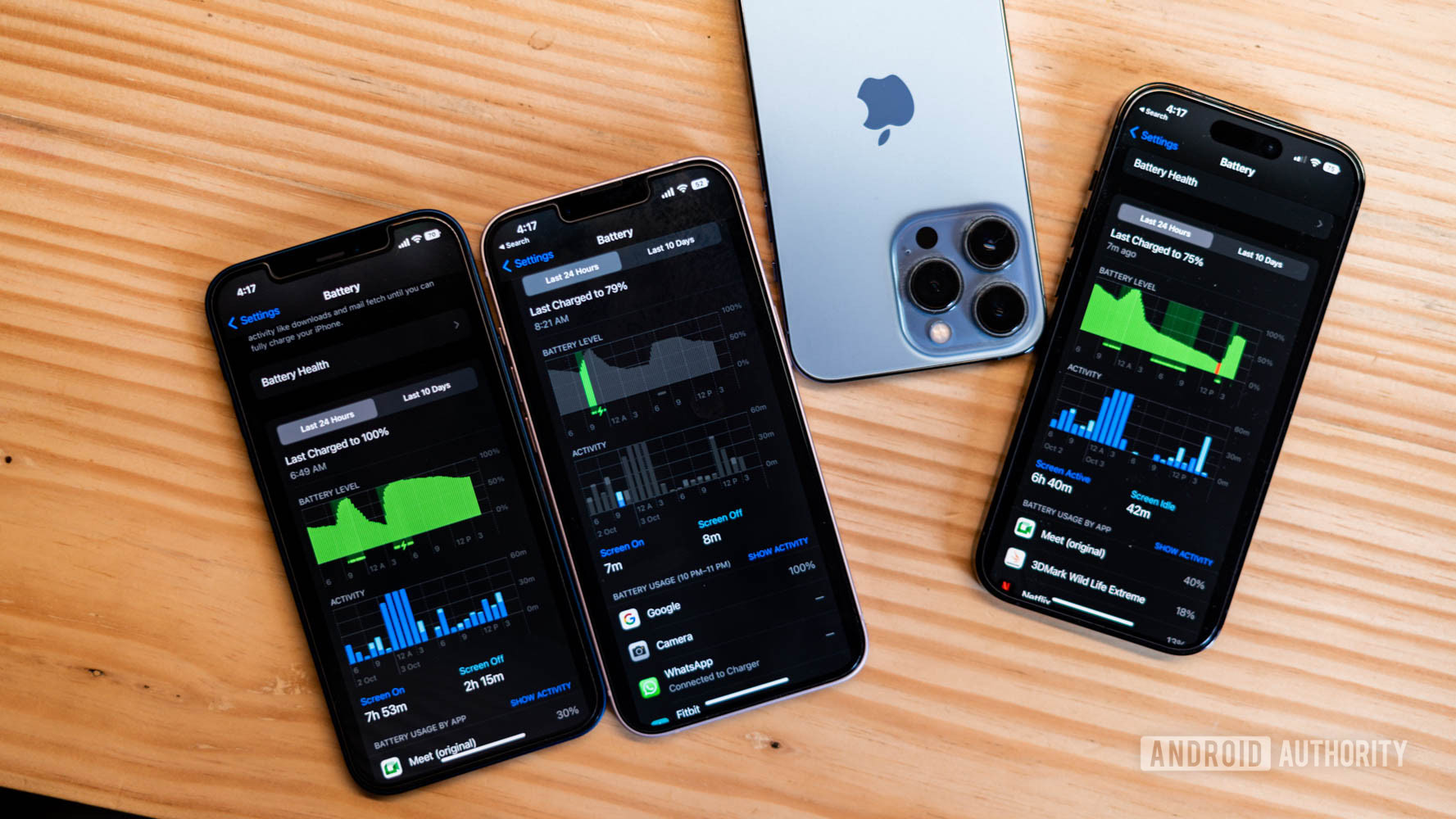
Samsung batteries tend to run longer than iPhones based on our testing, sometimes well over a day, and that’s what you’d expect based on specs. Multiple Samsung devices have 5,000mAh battery packs, whereas even the iPhone 16 Pro Max tops out at 4,685. Apple does its best to optimize power usage, but there’s only so far that can go. Neither company is putting out something that can last more than two days, despite longer life being a frequent public demand.
Samsung often triumphs when it comes to charging speeds, at least on high-end models. The S25 Ultra supports 45W wired charging. While Apple has caught up with the iPhone 16 Pro Max, its older flagships can’t do any better than 27W. Even the older S23 manages 25W versus the iPhone 15’s 20W (or less).
S25 models also offer faster 15W Qi charging, twice what iPhones are usually capable of. Apple users can hit those speeds when using MagSafe, however, and the iPhone 15 lineup supports Qi2, which is actually based on Apple’s technology.
Reverse wireless charging is present on a number of Samsung phones, whereas iPhone 16s can only perform reverse wired charging. In both cases the tech is limited to 4.5W, so don’t expect to top up your AirPods or Galaxy Watch in a hurry.
iPhone vs Samsung: Software and ecosystem
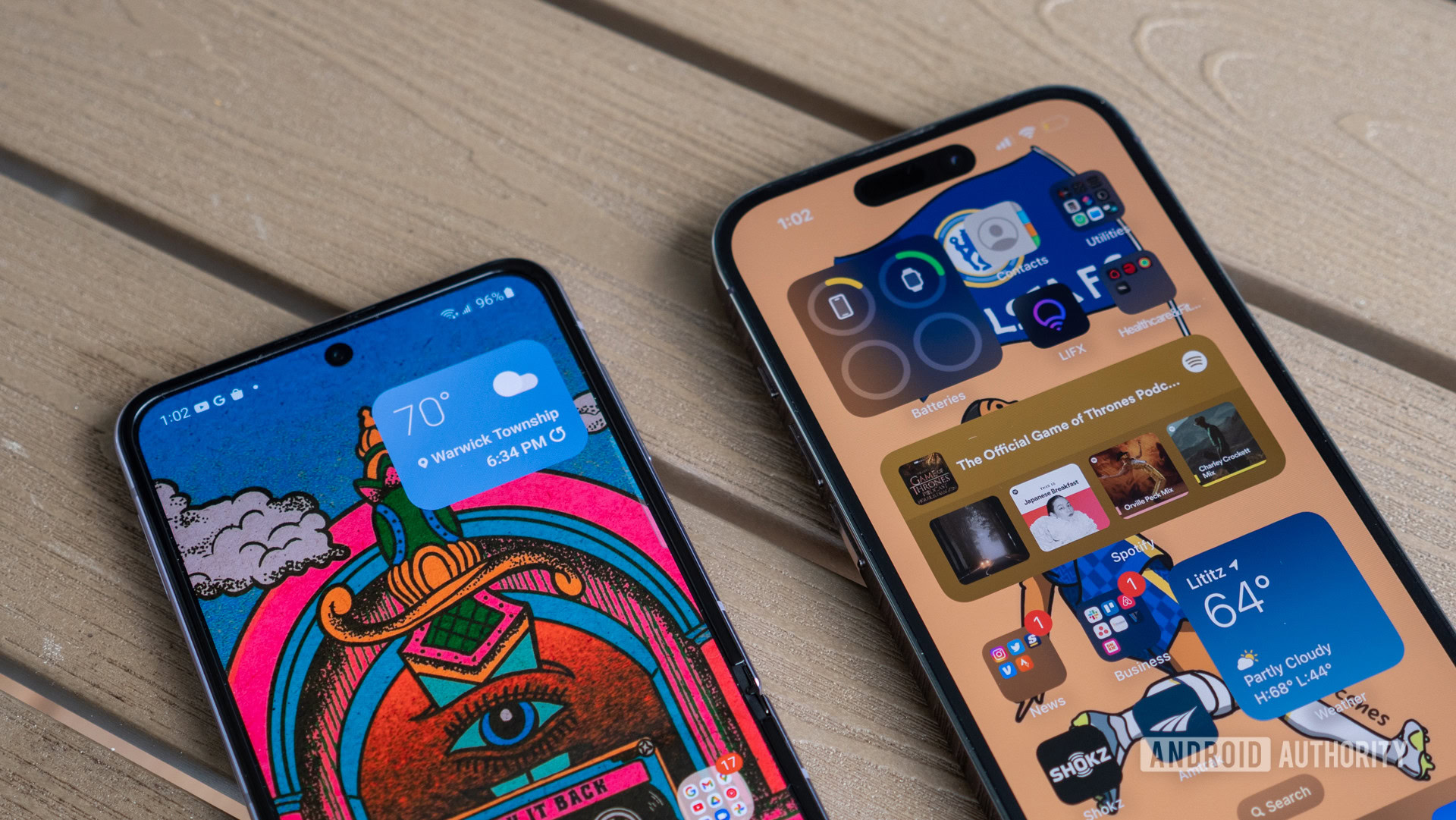
Here at Android Authority, we can’t help but be a little biased toward Google’s operating system. Android is an open platform offering more choice, versatility, and customization, to name a few benefits. Samsung’s One UI adds a lot of bloatware on top of stock Android, making it easy to get lost in all the icons, endless settings, and pre-installed apps you likely won’t ever use. On the flip side, it does enable even more customizability with exclusive apps such as GoodLock.
There are a few things that even we admit iOS does better. For starters, iOS tends to be a simpler and smoother experience. This is partly due to Apple’s highly optimized hardware, but the user interface is an example of the saying “less is more.” There are no app drawers to hide things, and controls are frequently more intuitive.
Samsung tends to offer four OS updates and five years of security updates for many of its models, while Apple averages six OS updates.
Regarding software support, Samsung offers up to four OS updates and five years of security updates for many of its models, including the older Galaxy S series, Z series, and select A-series devices. Past devices like the Galaxy S20 and Note series have received three years of OS updates and four years of security updates. As of the Galaxy S24 series, Samsung’s flagships will now receive seven years of software updates — patches and full Android versions.
In comparison, Apple offers up to six OS updates on average. iPhone owners can also download these as soon as they launch, whereas Samsung has to get an Android update from Google, optimize it for specific products, and only then seed it. The process can take months.
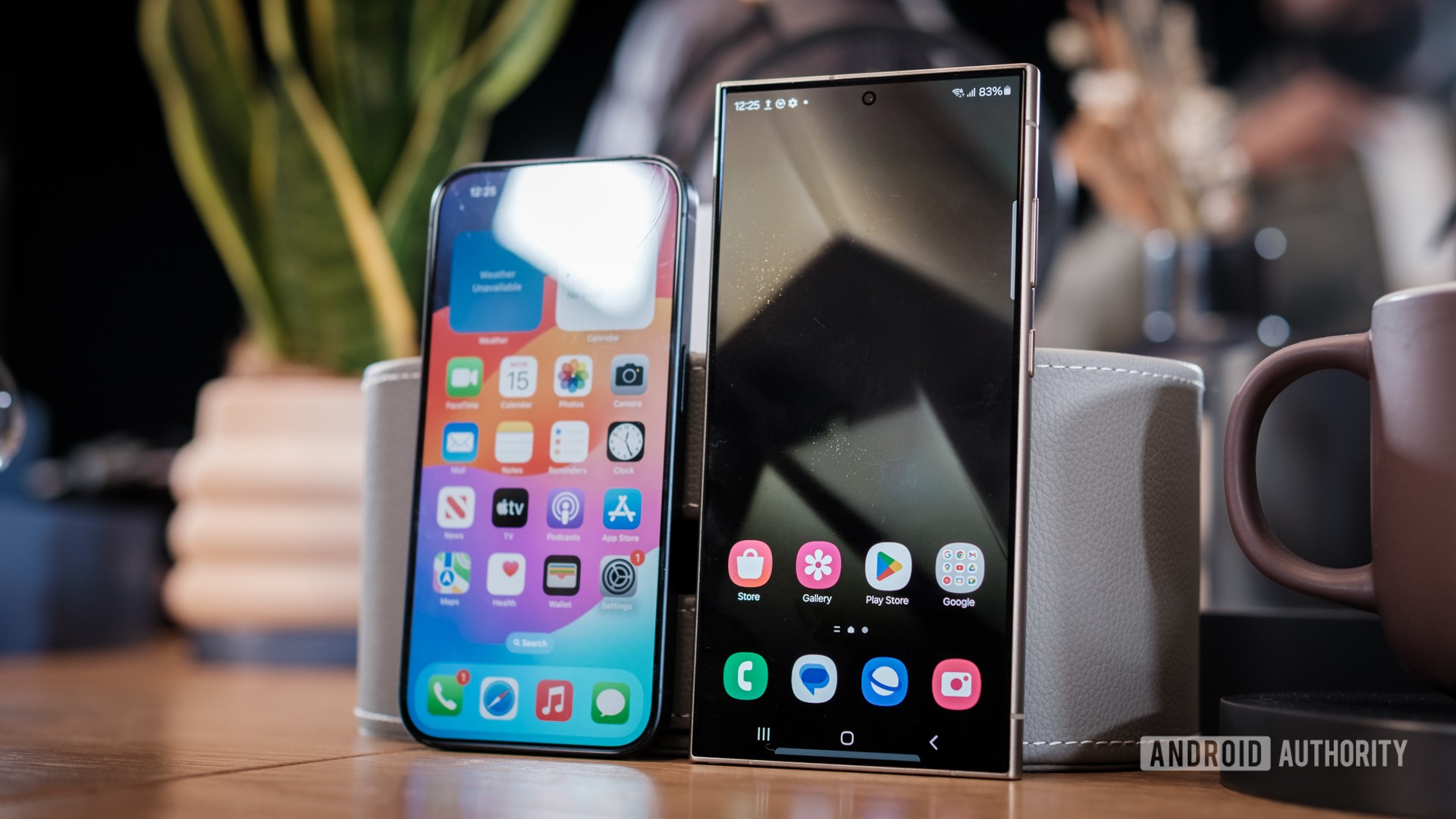
Because iOS is Apple’s proprietary software, the company gets more control over the end-user experience. That translates to better memory management, software integration, and user security. The downside is that this puts users within Apple’s walled garden, unlike Android, which is open-source. You can only ever get iPhone apps from the Apple App Store unless you’re a hacker or developer, and some features are reserved for Apple apps, accessories, and services — even Garmin’s most expensive fitness watches can’t be used to reply to iPhone messages the way an Apple Watch can.
iOS is simpler and smoother to use, but the complexity of One UI allows for much more customization.
Many apps are available on both operating systems. There’s a higher quantity on the Android side, but iPhone apps tend to have higher quality, since Apple enforces a strict testing system and developers know they’re more likely to cash in. You have to be doing pretty well financially to afford an iPhone 15 Pro, after all.
We’d talk more about specific features here, but Apple, Samsung, and Google are locked in a continual arms race, so things that were once an advantage of the Apple ecosystem can quickly become available to Samsung users and vice versa. SmartThings Find is Samsung’s version of Apple Find My, for example, and a growing of audio products (including the Apple-made Beats Studio Buds Plus) support Google’s Fast Pair and Audio Switch.
iPhone vs Samsung: AI features
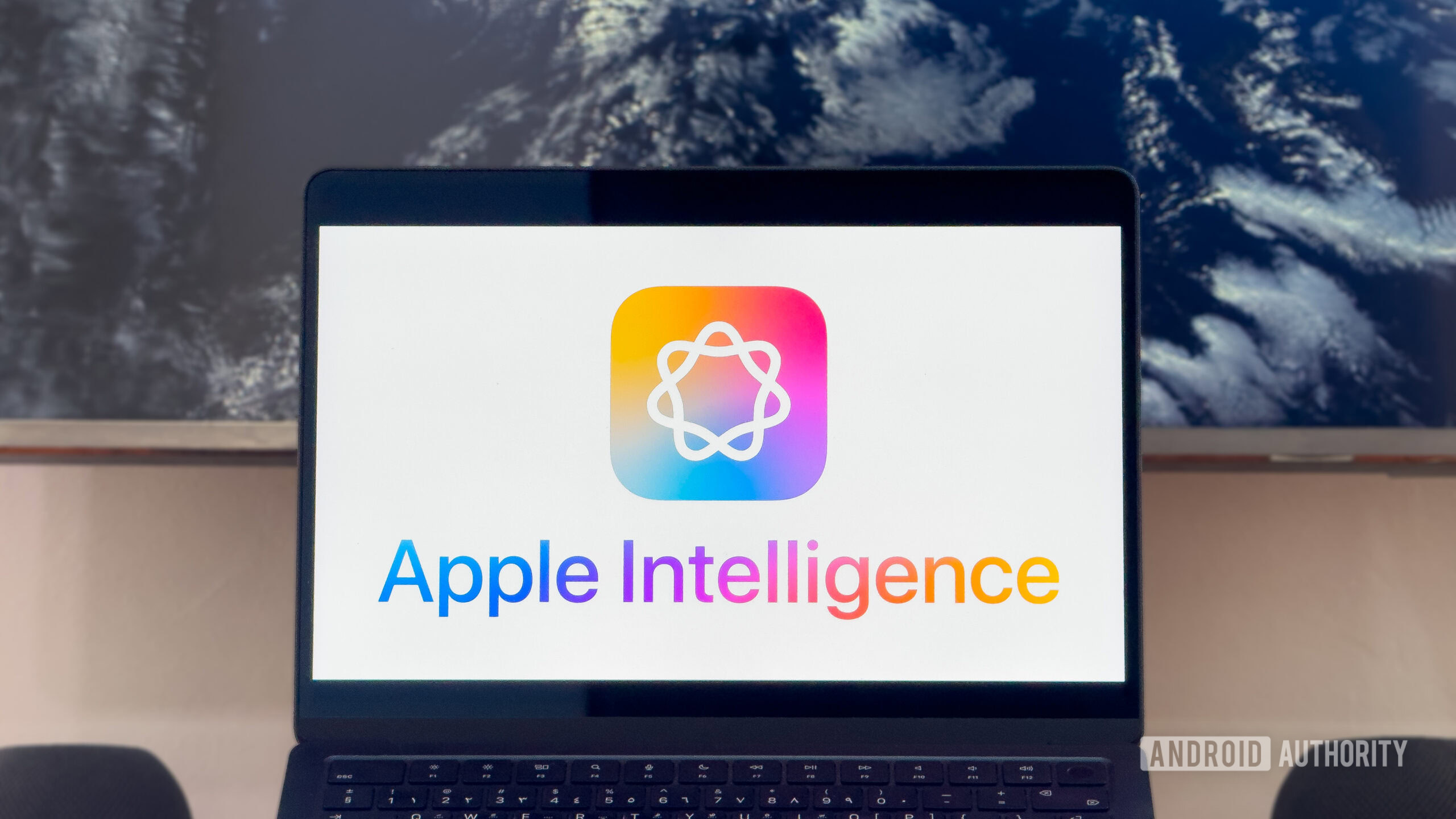
Both companies are pushing the generative AI agenda, Samsung with its Galaxy AI and Apple with Apple Intelligence. The former is available on several Galaxy smartphones, foldables, and watches, including the Galaxy S25, Galaxy Z Fold 6 and Flip 6, and the Galaxy Watch 7 series. Apple Intelligence is currently fairly limited, featuring on the iPhone 16 Pro and 15 Pro models, iPads, and Macs.
Currently, Galaxy AI powers select features on Samsung devices. For photography and video, Galaxy AI introduces ProVisual Engine, which bolsters the image quality when capturing content. Generative Edit, similar to Google’s Magic Editor, allows users to move or even erase objects in photos. Sketch to Image allows users to draw on a photo to generate an AI version of said drawing. Galaxy AI also offers additional features, like an Interpreter mode and Live Translation, which transcribes and translates conversations and calls in real-time.
Apple Intelligence offers similar features, including a photo cleanup tool for its Photos app, writing tools that include Smart Script for more intelligent handwritten management for iPad users, and a new calculator app that can crunch handwritten problems. Apple Intelligence also functions through Siri, giving the voice assistant more powerful responses that can sample info across the Apple app ecosystem.
Currently, both Galaxy AI and Apple Intelligence are free and in their nascent stages of life. However, both programs can be expected to develop quickly over the coming years.
iPhone vs Samsung: Value for money
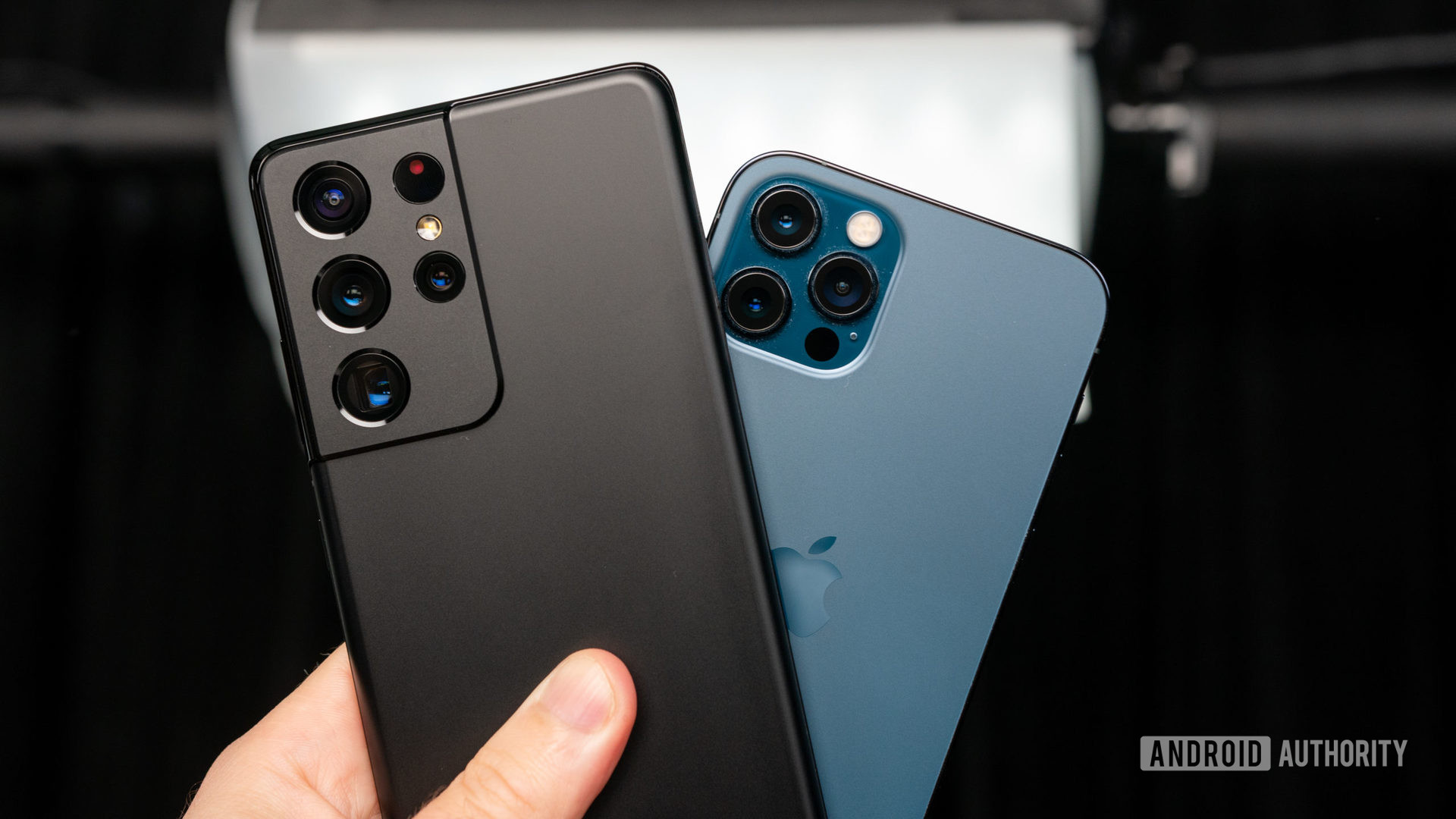
Ultimately, the value you get from a phone depends on what you’re looking for and how you want to use it. While Samsung sometimes has better raw specs, most shoppers should be satisfied with an iPhone 16 or S25, and even the companies’ cheaper models should function well in daily life. Anyone getting an iPhone 15 or S24 or even the iPhone 14 or Galaxy S23 as their first smartphone will probably be delighted.
You'll generally get better hardware and specs for the price with Samsung, but the phones can depreciate in value faster than an iPhone.
That being said, Android phones tend to depreciate faster. Samsung’s keep their value better than some competitors, but you typically get a higher trade-in value for an iPhone when it’s time to upgrade. Plus, you can usually sell them for more and faster, given how popular Apple products are.
On the other hand, iPhones are more expensive to repair than Samsung devices. Apple Stores are notorious for charging high fees, primarily because only Apple and authorized repair shops have the tools capable of opening and fixing iPhones. There is a self-repair service, but it requires skills most people would rather pay someone for. Conversely, you can typically take Samsung phones to any trusted technician to repair, and their latest iFixit program looks like a promising, efficient repair solution.
iPhone vs Samsung: Data security and privacy
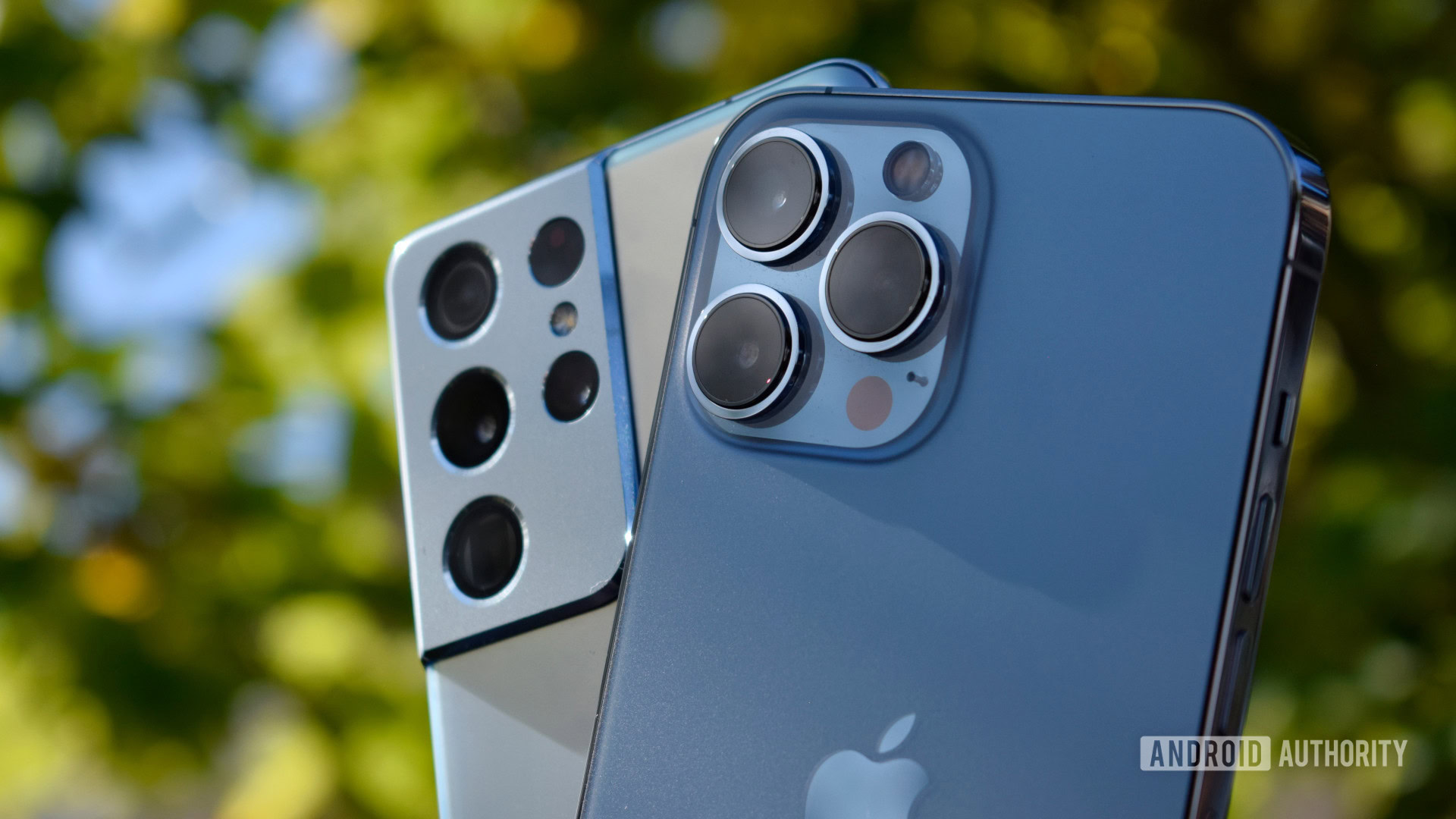
Thanks to Google’s security updates becoming more consistent, this topic isn’t as one-sided as it once was. Google has continued to secure the Google Play Store and add measures to ensure the information on your phone stays safe. These include sandboxing, two-step verification, Google Play Protect, further controlled app permissions, and more. These upgrades, along with more educated users, make for robust Android security that begins to rival iOS.
Whether iOS is better than Android in security is now up for debate, but the consensus still gives Apple the upper hand. iOS has more consistent updates for all devices, a closed ecosystem that is harder to penetrate, and a stricter app store. These factors combined make it harder for attackers to target iOS users.
iPhone vs Samsung: Who wins?

So, which brand comes out on top? If you were expecting this article to settle the iOS vs Android debate forever, well, sorry. This question is asked annually; the answer remains the same — it depends. Apple and Samsung’s phones are some of the best in the business, but which is the best for you depends on what you want to use the phone for, which ecosystem you want to be a part of, and which operating system you prefer.
By highlighting all the pros and cons of iPhones and Samsung Galaxy devices, we hope you have enough information to determine which side better suits your needs. For the most part, Samsung Galaxy phones have better cameras, battery life, and display tech for the money than the iPhone offers. Despite that, a Samsung phone may depreciate in value faster, and Apple’s optimization counts for a lot.
Samsung phones have better cameras, battery life, and display tech for the price, but iPhones have better software support, security, and a proven ecosystem.
iPhones also tend to offer better security, more frequent updates, and a more integrated ecosystem, though Samsung is quickly catching up. Of course, that all comes at the cost of staying within Apple’s proprietary universe. If you want to customize your phone to look exactly the way you want, and have any option in where you shop for apps, then Samsung is the way to go. Additionally, if you’re shopping on a budget, Samsung has some great mid- to low-range options, whereas most iPhones will cost you a pretty penny, even when they’re two or three years old.
If that wasn’t enough to consider, don’t forget about Google’s Pixel phones. There’s a chance that neither Apple nor Samsung have exactly what you want for your budget, so the AI-centered Pixel 9 series (from $799 at Amazon) or the older Pixel 8 line (from $699 at Amazon) might fit the bill. Food for thought.
FAQs
iPhones made up 52% of the US smartphone market in the first quarter of 2023, with Samsung phones winning second place at 27%. Looking worldwide at 2022, Canalys reported that Samsung was the number one brand, managing 22%. Apple took second place with 19%.
They have different strengths and weaknesses, so really, which one is better depends on your needs. Samsung phones tend to have better cameras, battery life, and display quality, even on budget models. iPhones do offer better software support and data security, however, as well as ecosystem benefits and deep optimization.
Yes, Samsung has brick-and-mortar stores just like Apple, though there are fewer globally. You can find your nearest Samsung store here.
Both Samsung and Apple offer long-term software support. Apple offers up to six OS updates, whereas Samsung offers up to four OS updates with five security patches for its older flagships and seven years of software support for the Galaxy S24 series.
Hardware is a tougher question. Apple tends to have better build quality, but all smartphones lose battery capacity over time, and chances are you’ll want to upgrade to something faster before a device becomes genuinely unusable.